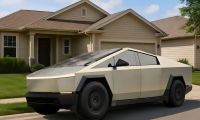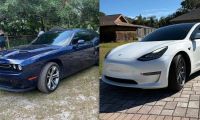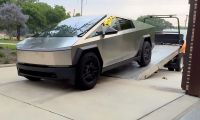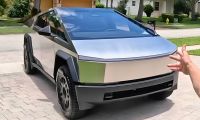Have you noticed that many of the ads on television for electric cars always seem to occur in warmer seasons? There's a strong reason for it. Battery-driven vehicles and cold weather don't get along very well. Cold weather is, indeed, an arch-enemy of battery efficiency.
Cold Weather And Batteries Don't Mix Easily
You've probably heard this frequently mentioned on newscasts or the internet as the weather turns bad, snow flies, and ice accumulates. If you are driving a standard internal combustion-powered (ICE) vehicle, the outside temperature doesn't matter much if the battery that the vehicle uses to start is relatively new. Once the vehicle starts and the alternator cuts in, the battery becomes part of the electrical system as the alternator takes over the brunt of the electrical work. Of course, if your vehicle's battery is older, you run the real risk of having to call for AAA's battery service or paying for a tow to a dealer to install a new battery because your vehicle is dead at the side of the road.
You would think that with the number of electric vehicles on the road today – Ford's Mustang Mach-E, the F-150 Lightning pickup, the E-Transit van, Chevy's Bolt, and others – that the issue of cold-claiming battery life has been fixed. The truth is that it hasn't. That's why you seldom see electric vehicle ads showing cold or snow. Yet, as the number of electrics grows, automakers must ensure that they are doing everything possible to maximize battery life. Take Ford's Lightning, for example.
The Ford F-150 Lightning pickup has been tested in extremely cold conditions. It endured months of real-world winter driving in Alaska and Michigan's Upper Peninsula. Its battery has been subjected to temperatures as high as 140 degrees Fahrenheit to as low as minus 40 degrees Fahrenheit in Ford's atmospheric test chambers.
Battery Efficiency Drops Below 40 Degrees Fahrenheit
However, all-electric vehicles experience energy decreases in cold temperatures due to battery cell chemistry. Temperatures below 40 degrees Fahrenheit cause the electrolyte fluid to become sluggish, limiting how much power is available to discharge and how quickly the vehicle's battery can charge.
As many F-150 Lightning customers in the U.S. and Canada begin their first winter with their new electric pickup, Ford wants to help make them aware that in low temperatures, they could see a significant reduction in range, which is normal.
Ford Has Battery Advice For Lightning Owners
--To help maximize your F-150 Lightning range in winter, here are some tips below:
--Park your F-150 Lightning in a garage whenever possible
--Keep your F-150 Lightning plugged in and charging when parked
--If planning a longer commute, precondition your vehicle using departure times to warm the battery while plugged in using the FordPass app or your truck's center screen
--If equipped, use the heated seats and steering wheel as primary heat to reduce energy consumed by HVAC
--When charging, turn off the heater if possible, or lower the temperature enough to remain comfortable (especially when using fast charging)
--If your F-150 Lightning is covered with snow, brush all the snow off before driving to eliminate extra weight and drag
Keep driving speeds moderate in cold temperatures, as high speeds use more energy.
--Ensure your tires are at the proper pressure
Ford Motor Photo
Marc Stern has been an automotive writer since 1971 when an otherwise normal news editor said, "You're our new car editor," and dumped about 27 pounds of auto stuff on my desk. I was in heaven as I have been a gearhead from my early days. As a teen, I spent the usual number of misspent hours hanging out at gas stations Shell and Texaco (a big thing in my youth) and working on cars. From there on, it was a straight line to my first column for the paper, "You Auto Know," an enterprise I handled faithfully for 32 years. Not many people know that I also handled computer documentation for a good part of my living while writing YAN. My best writing, though, was always in cars. My work has appeared in Popular Mechanics, Mechanix Illustrated, AutoWeek, SuperStock, Trailer Life, Old Cars Weekly, Special Interest Autos, etc. You can follow me on: Twitter or Facebook.












